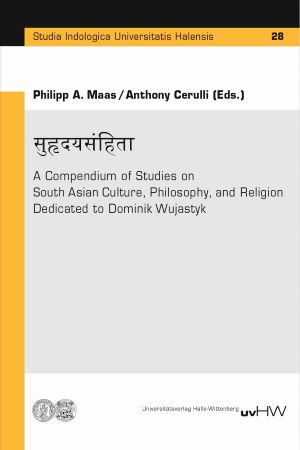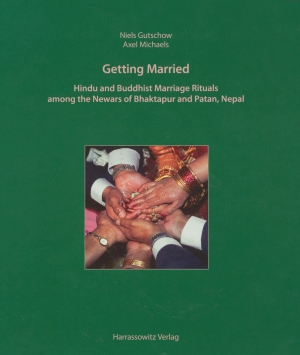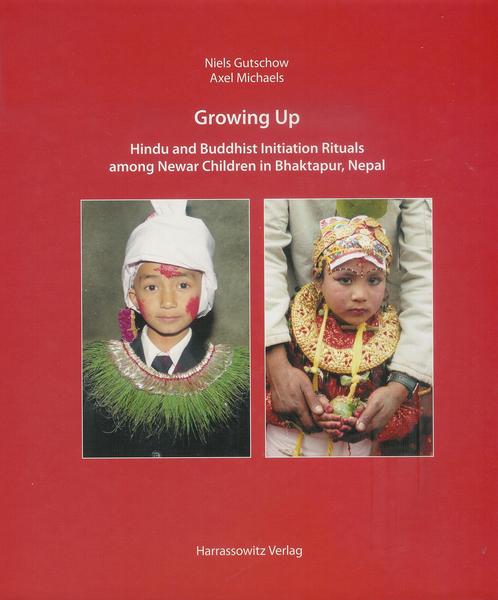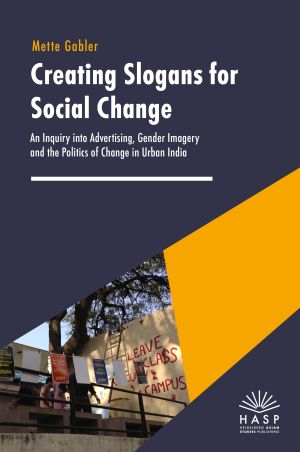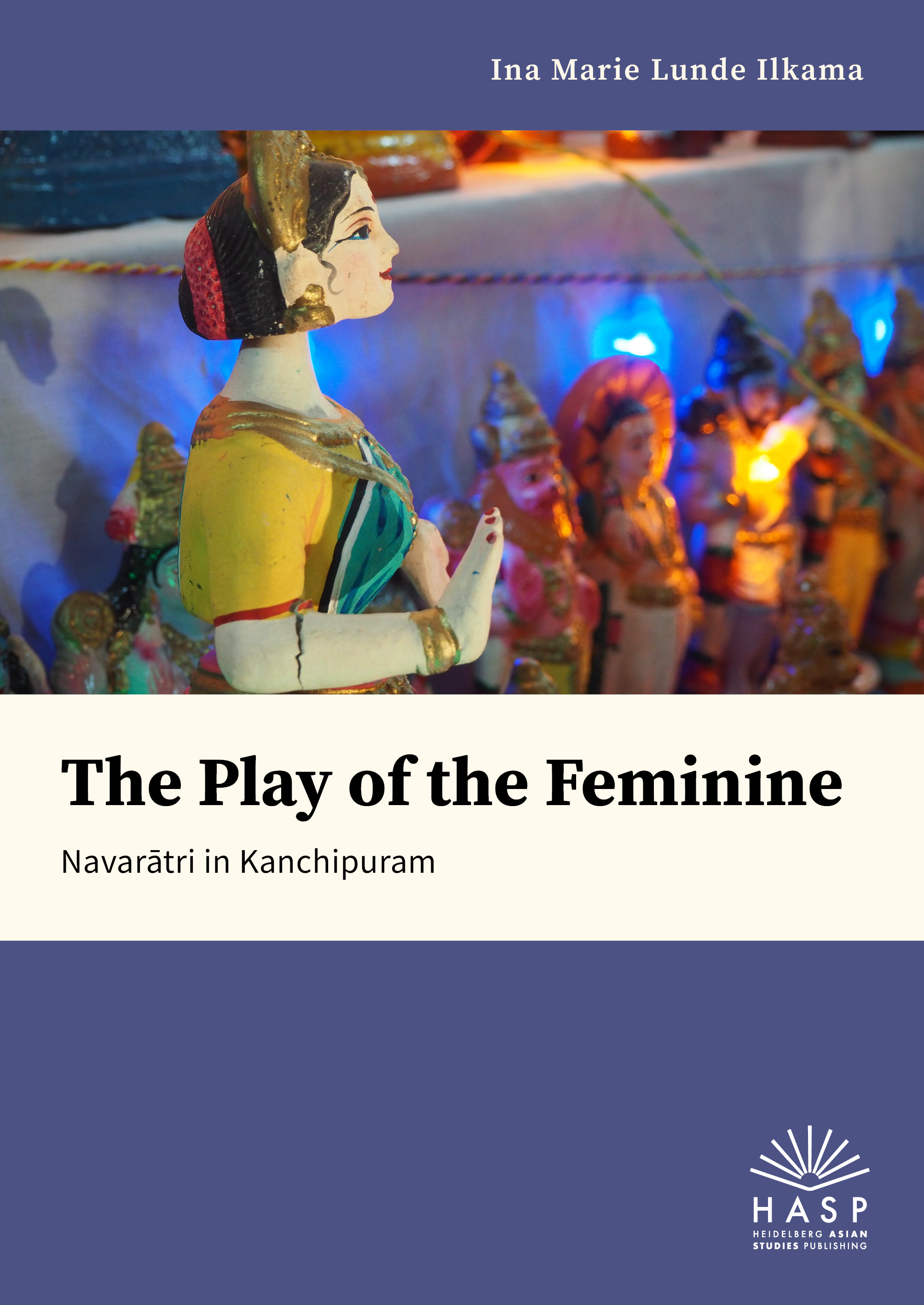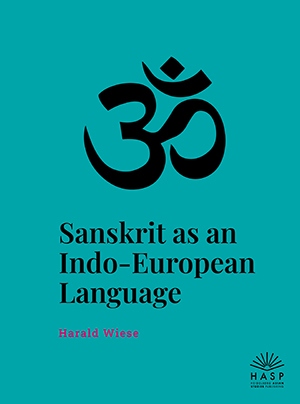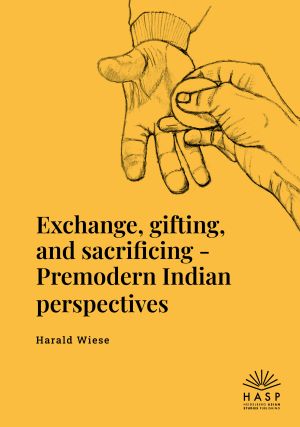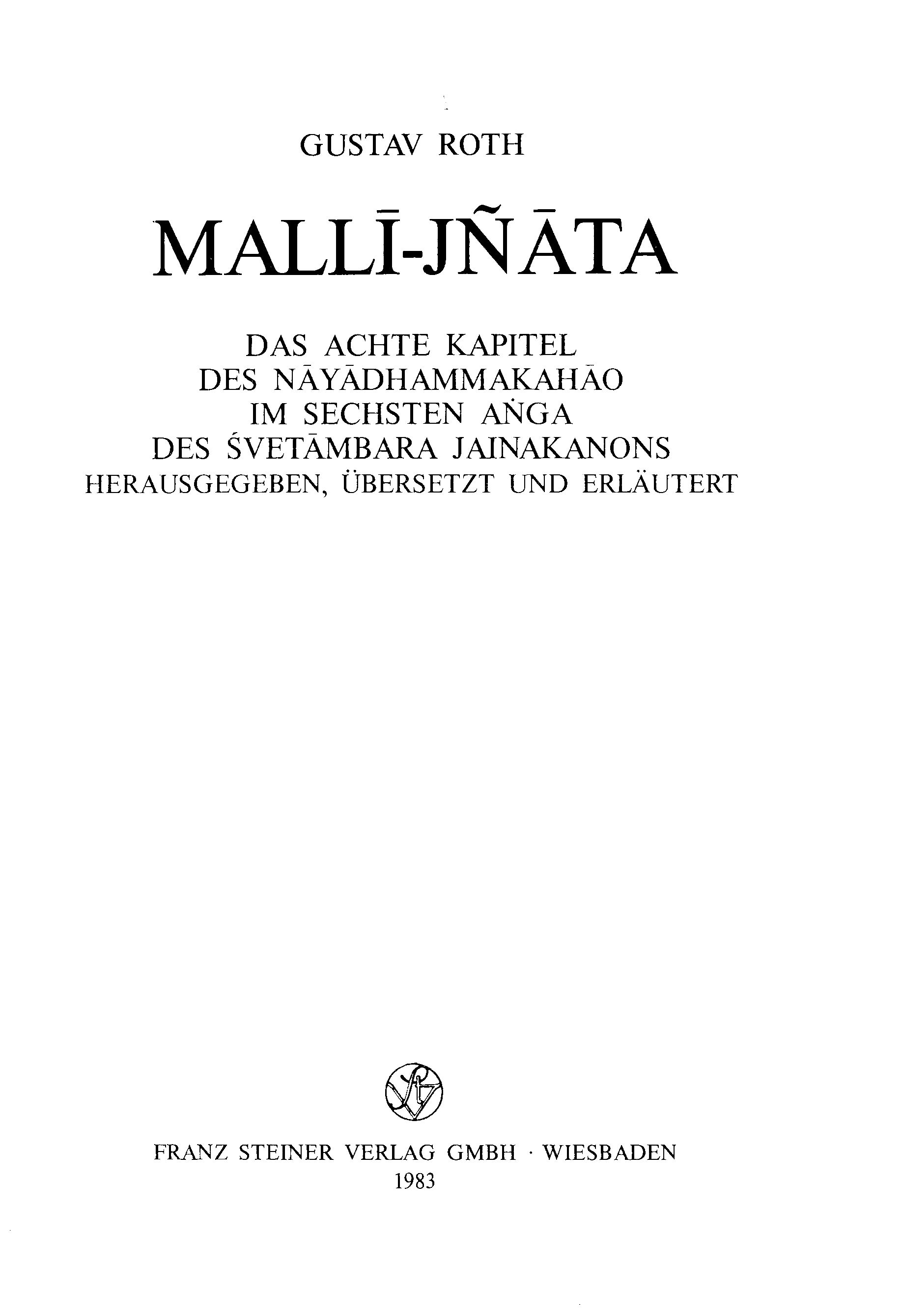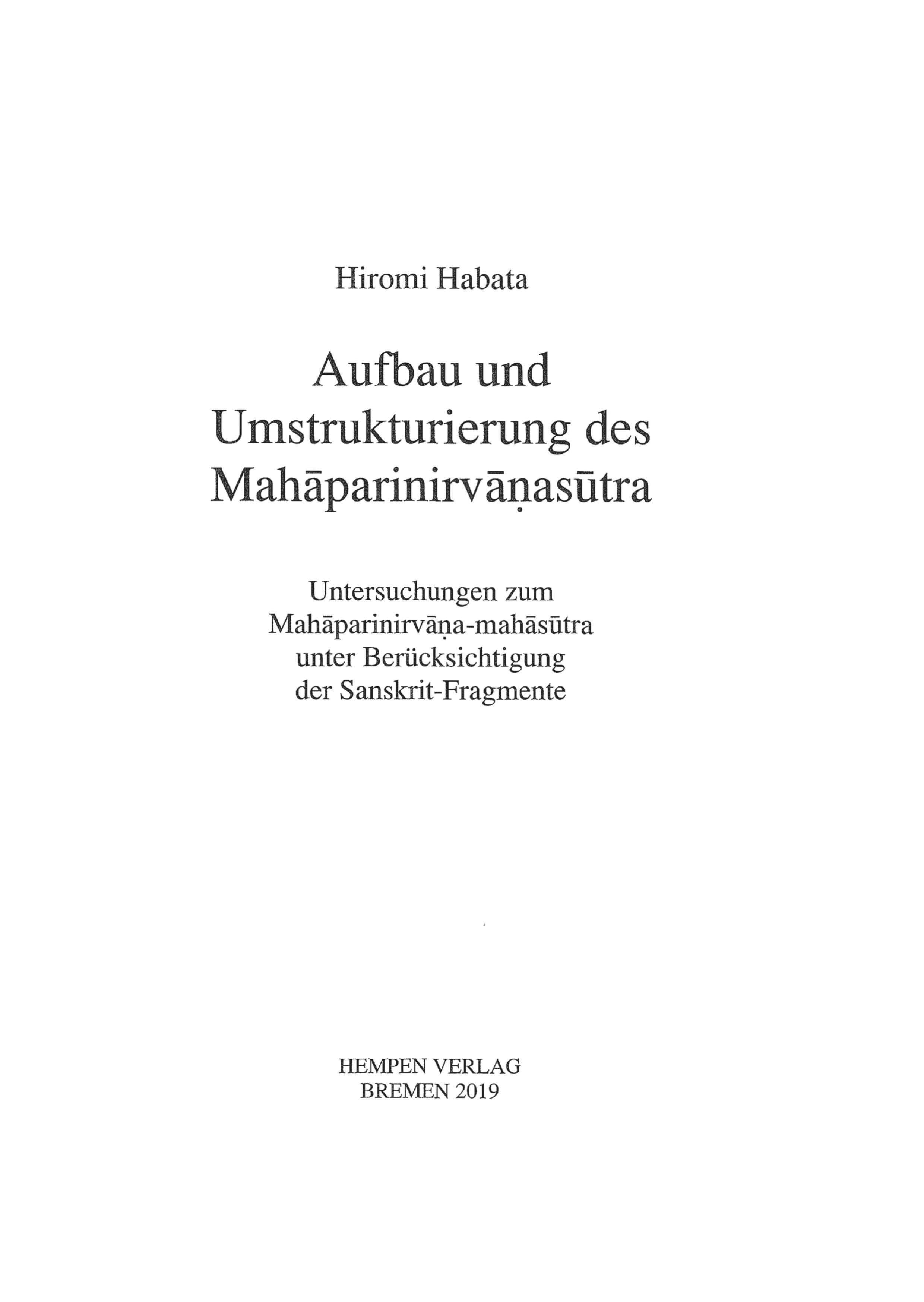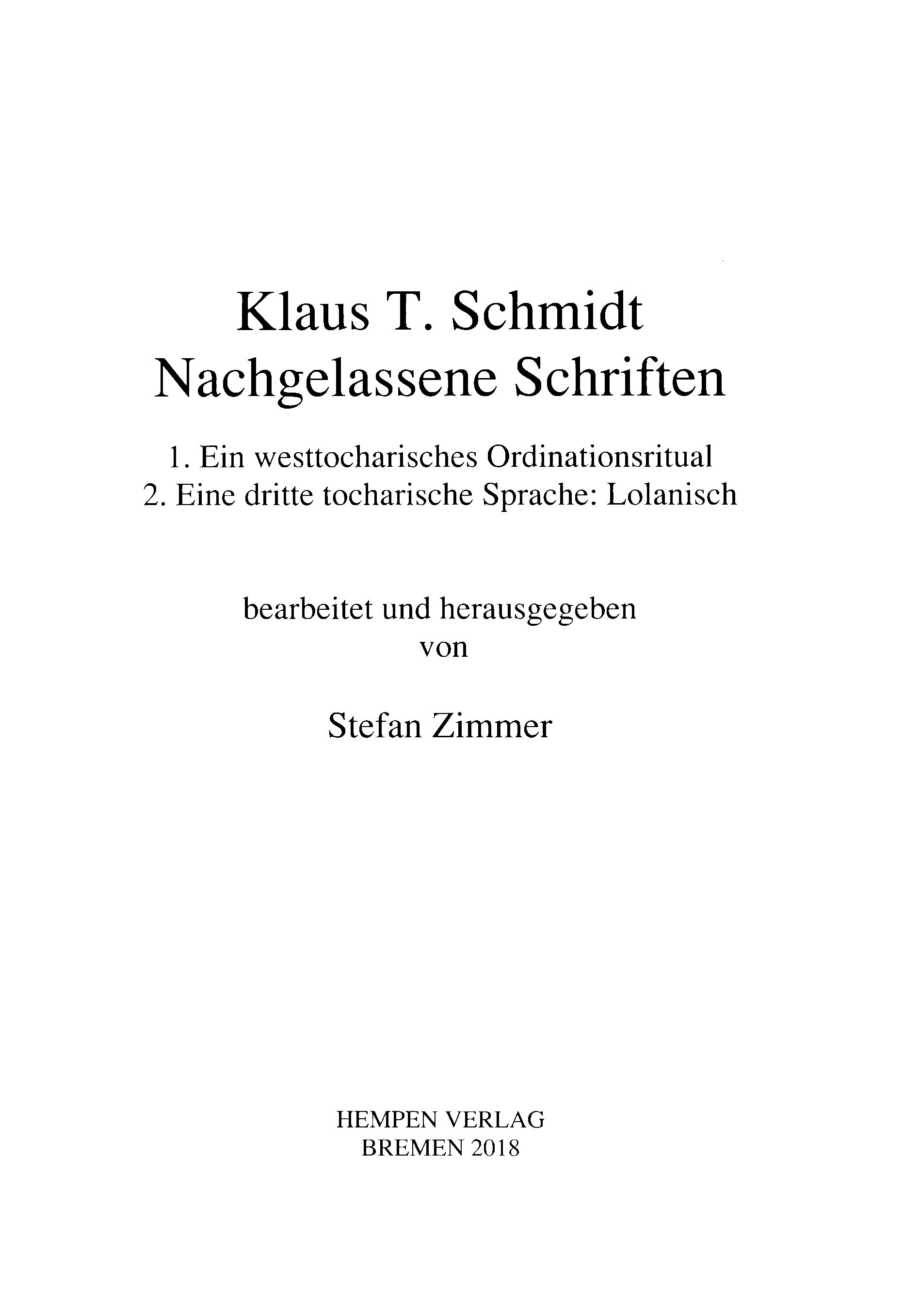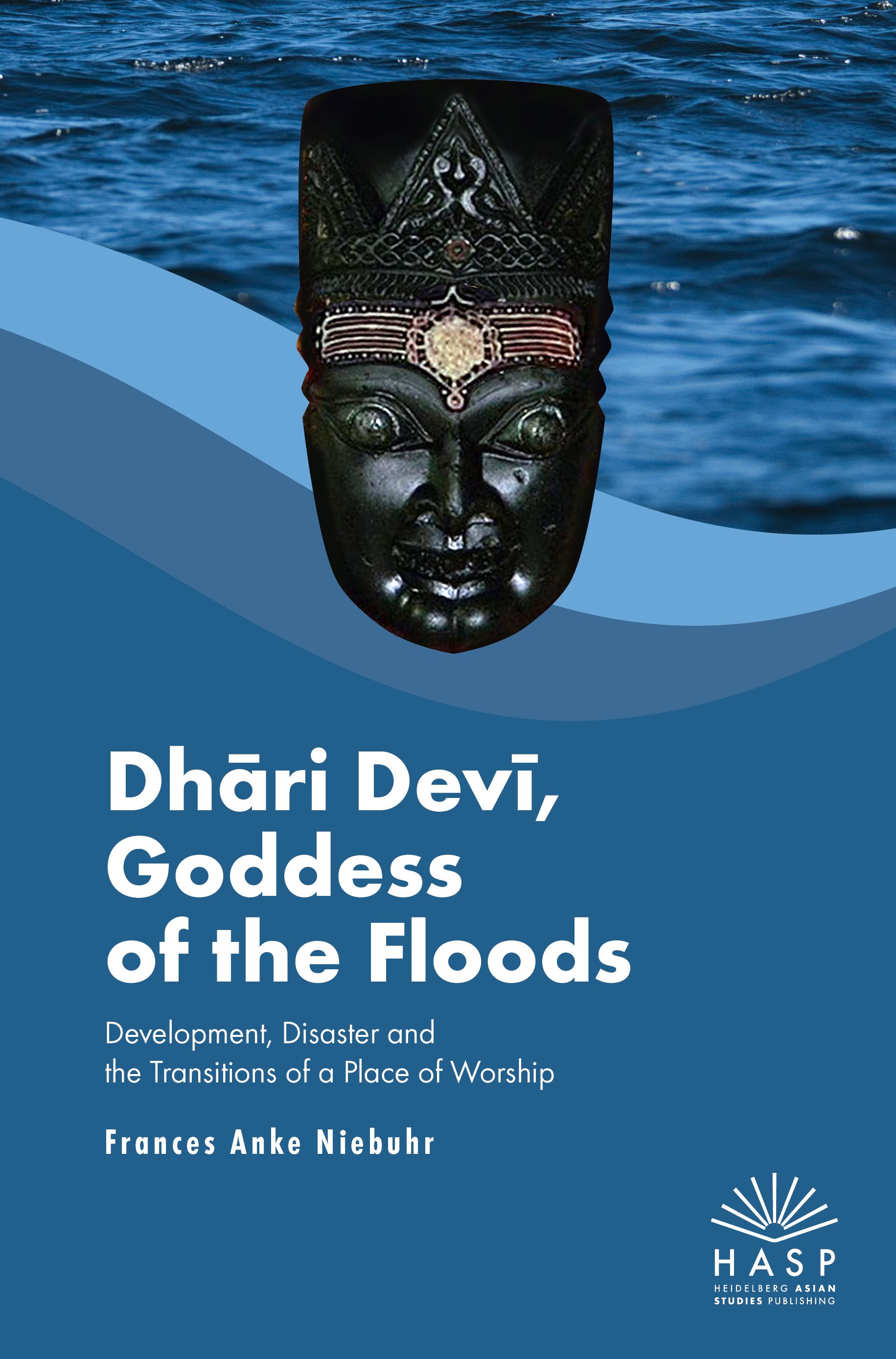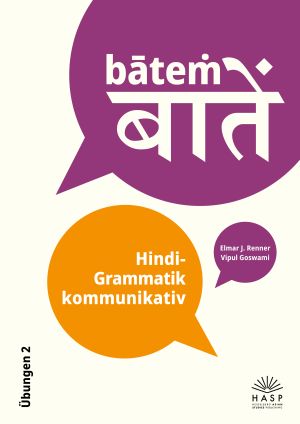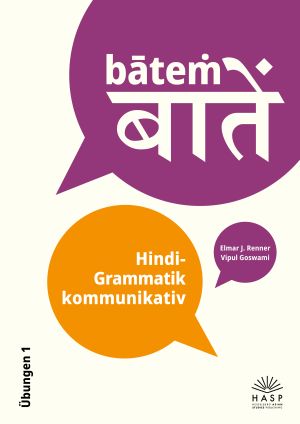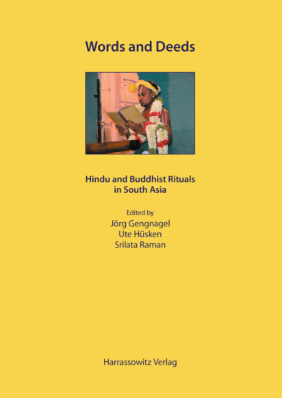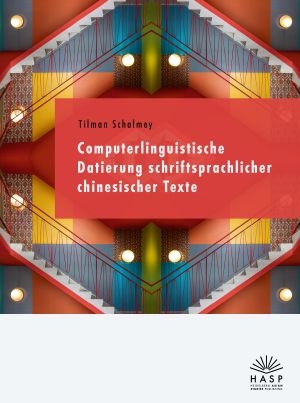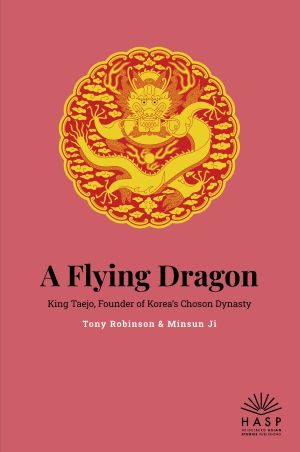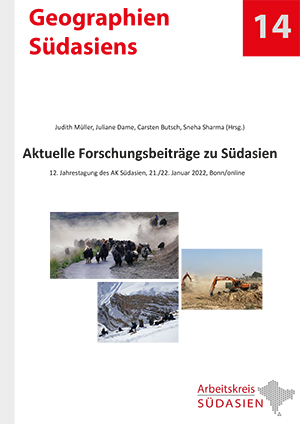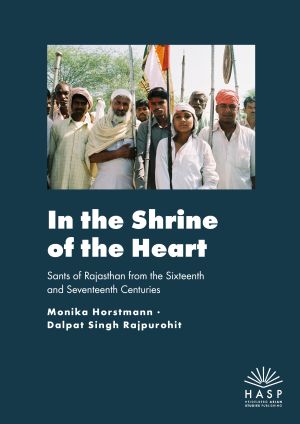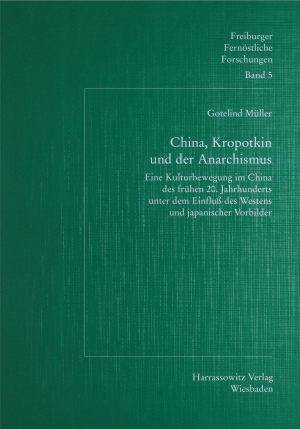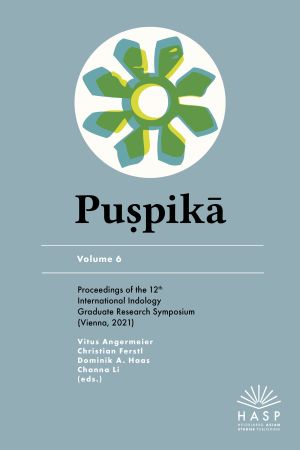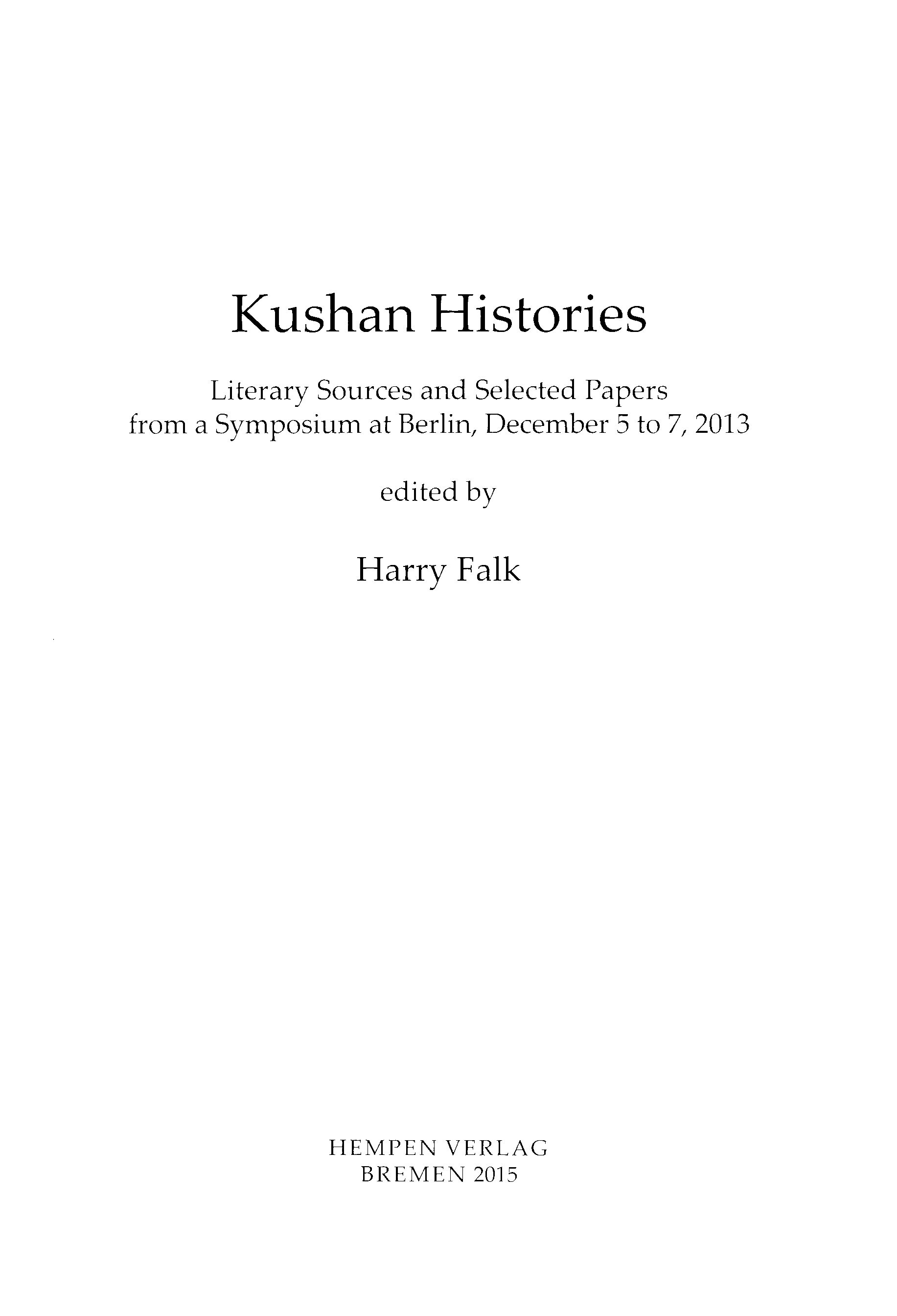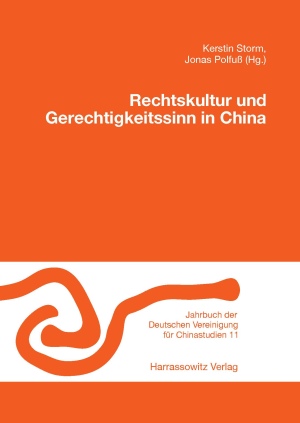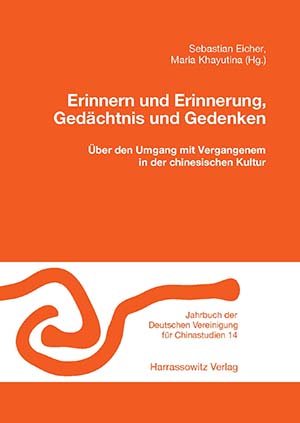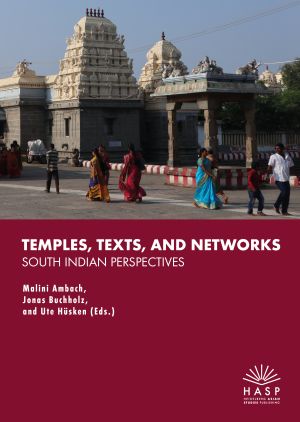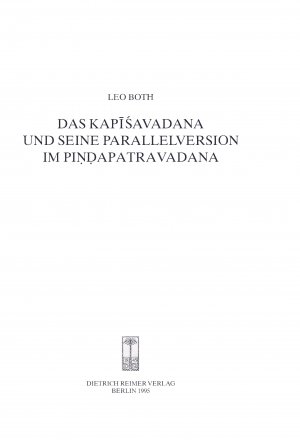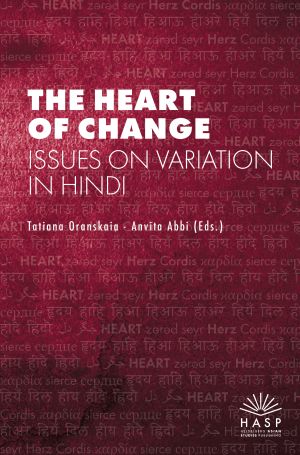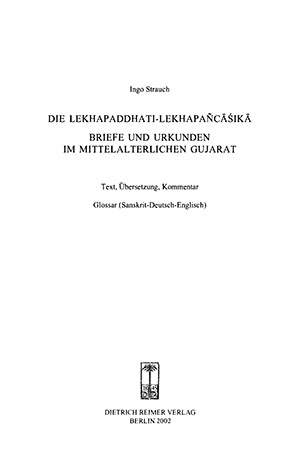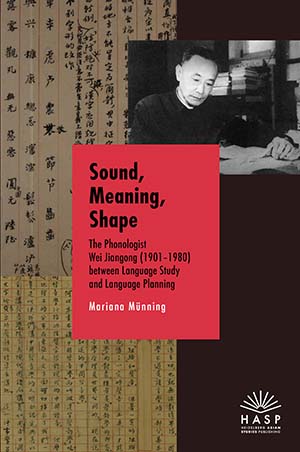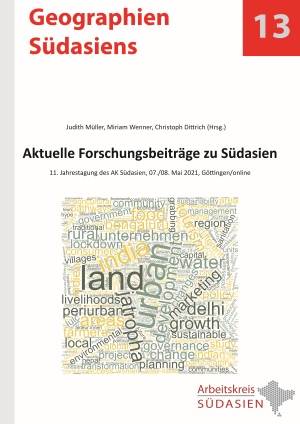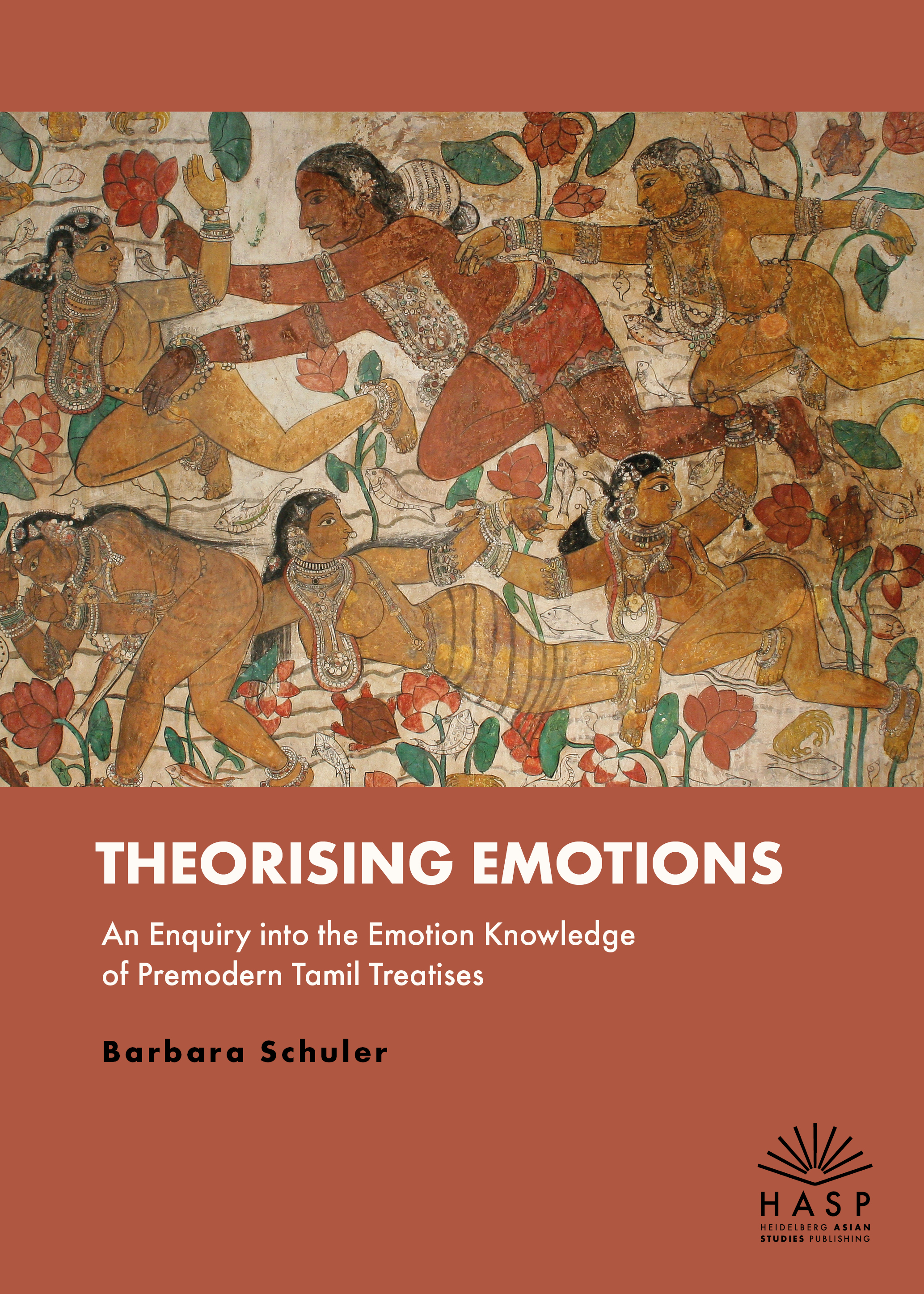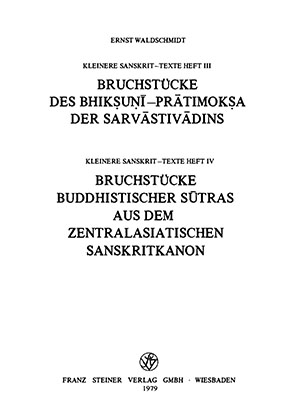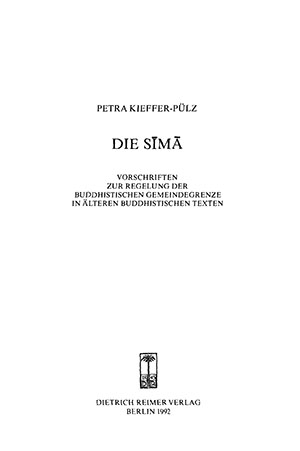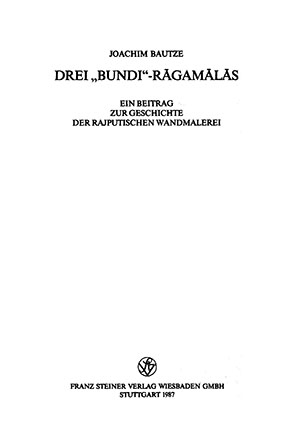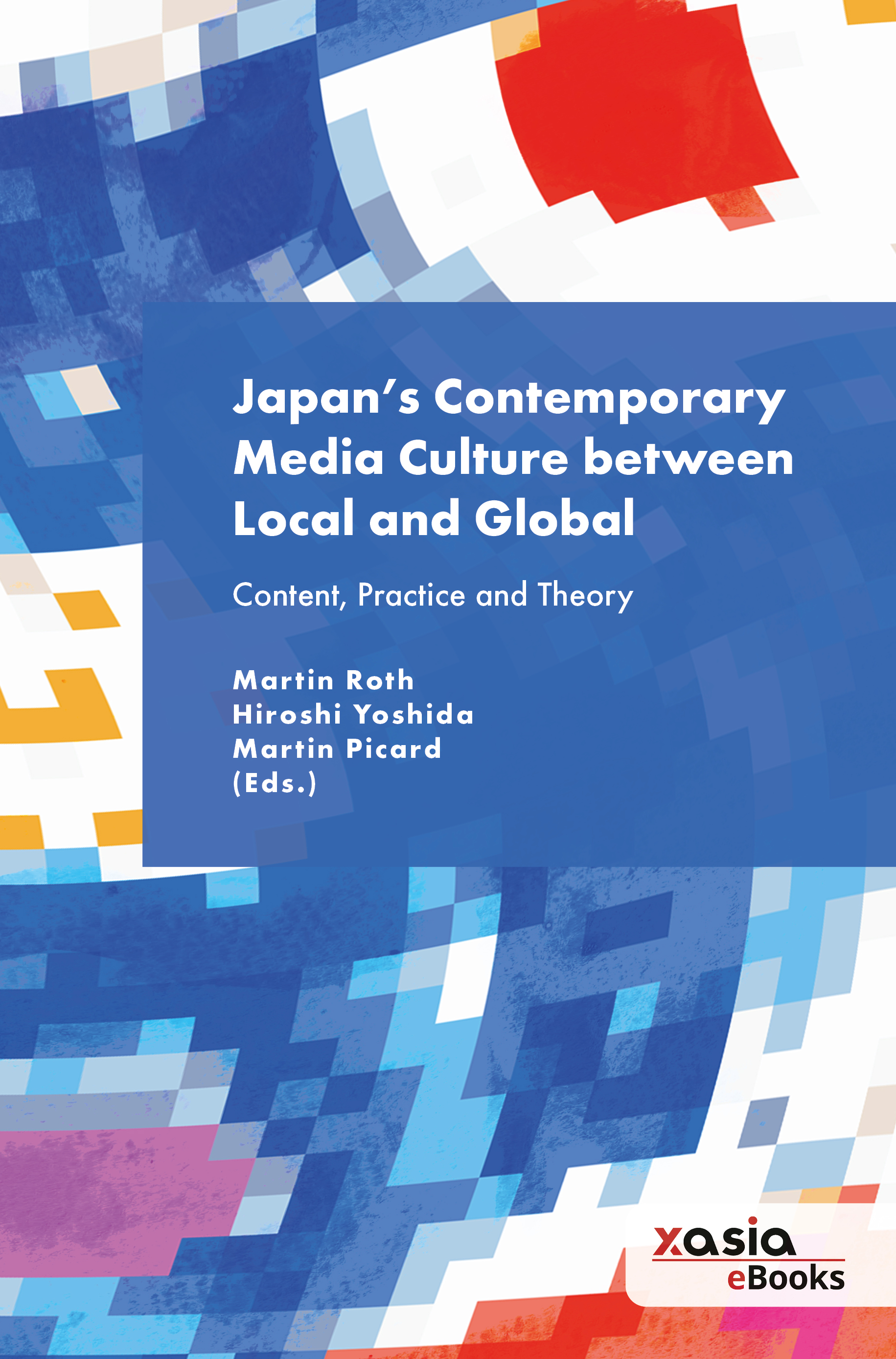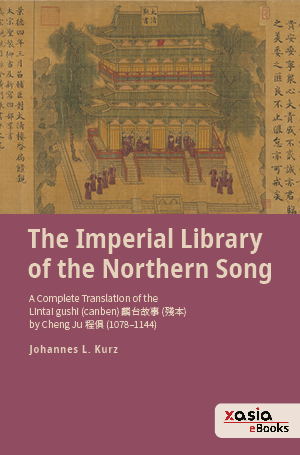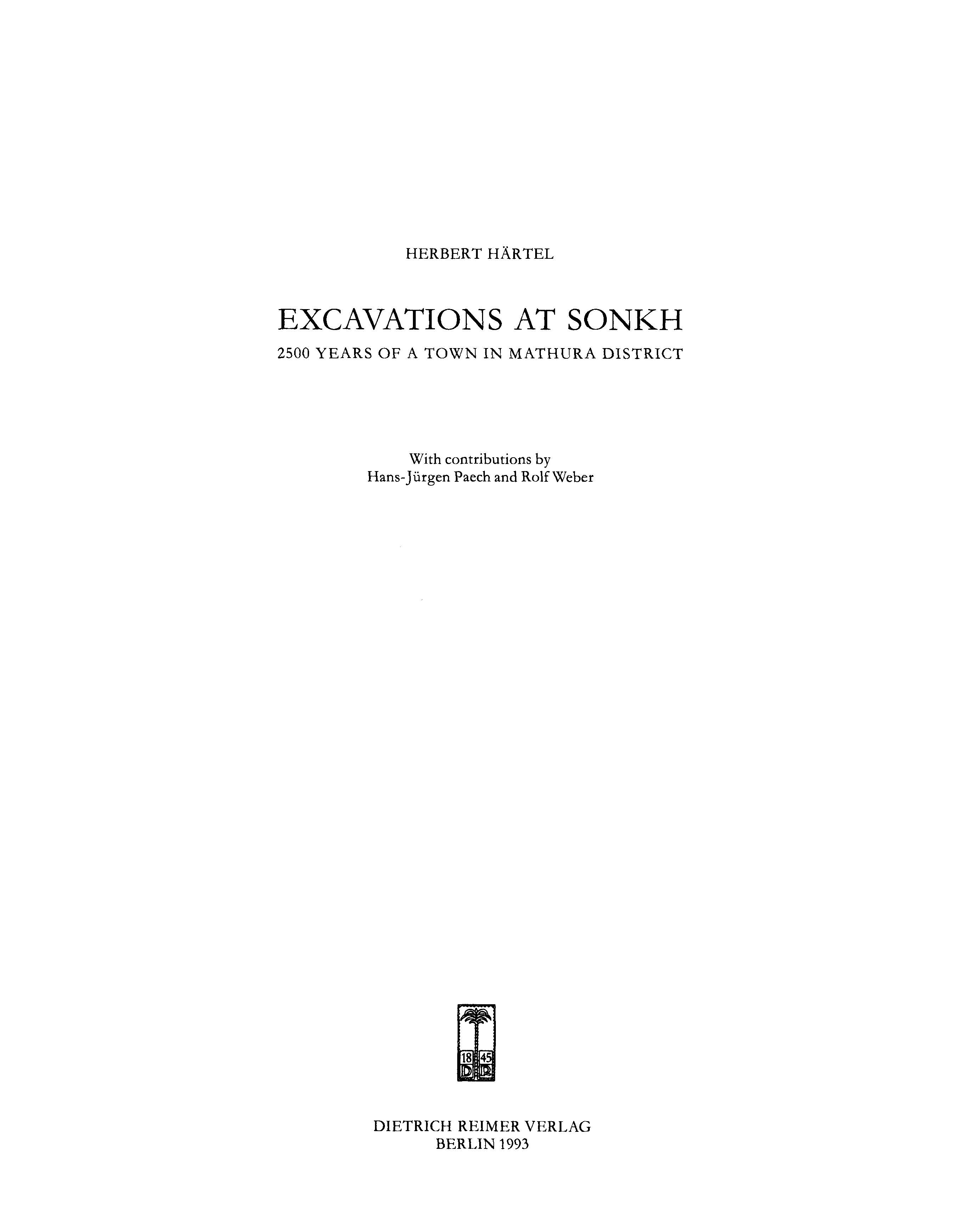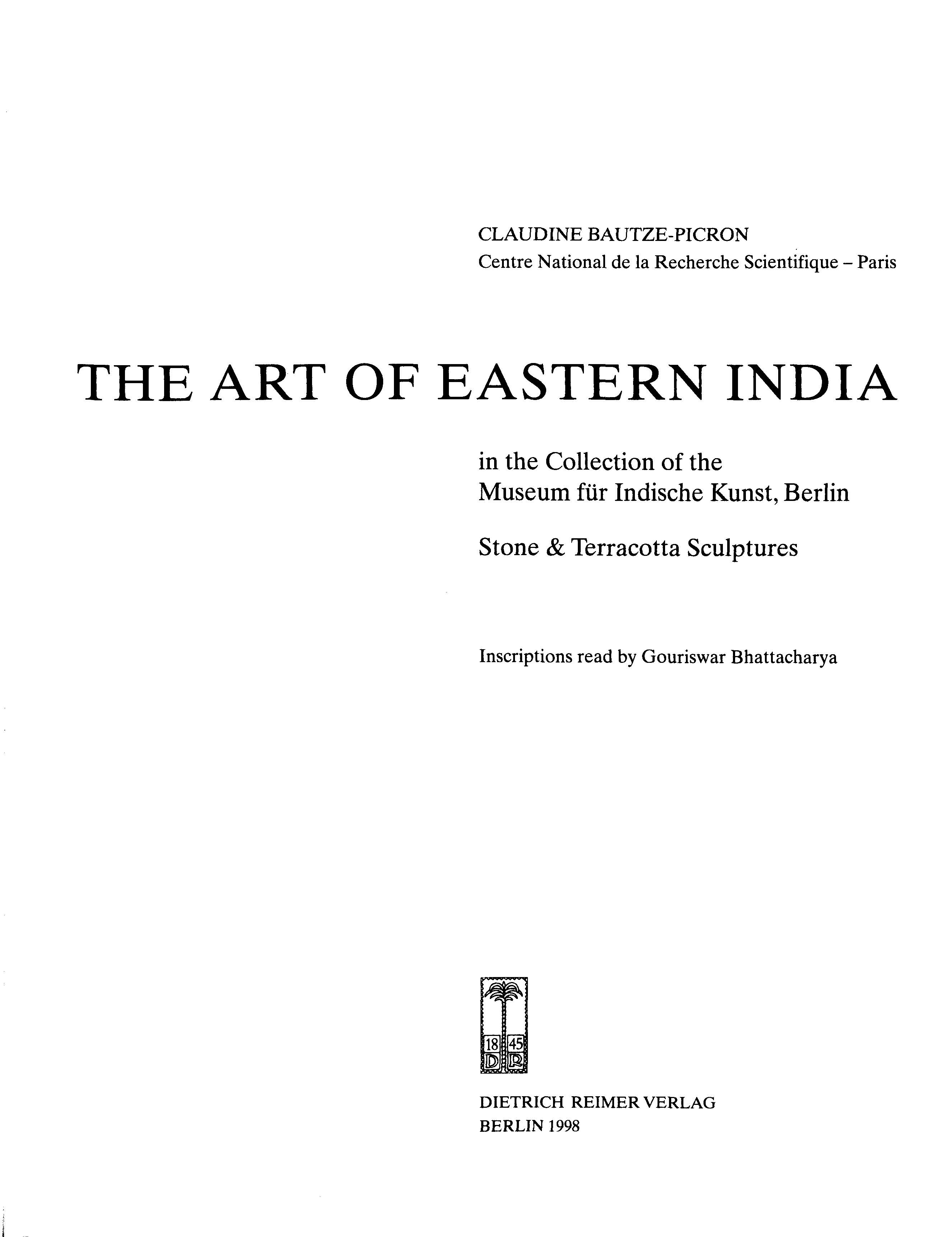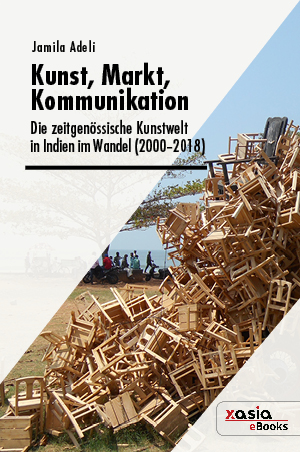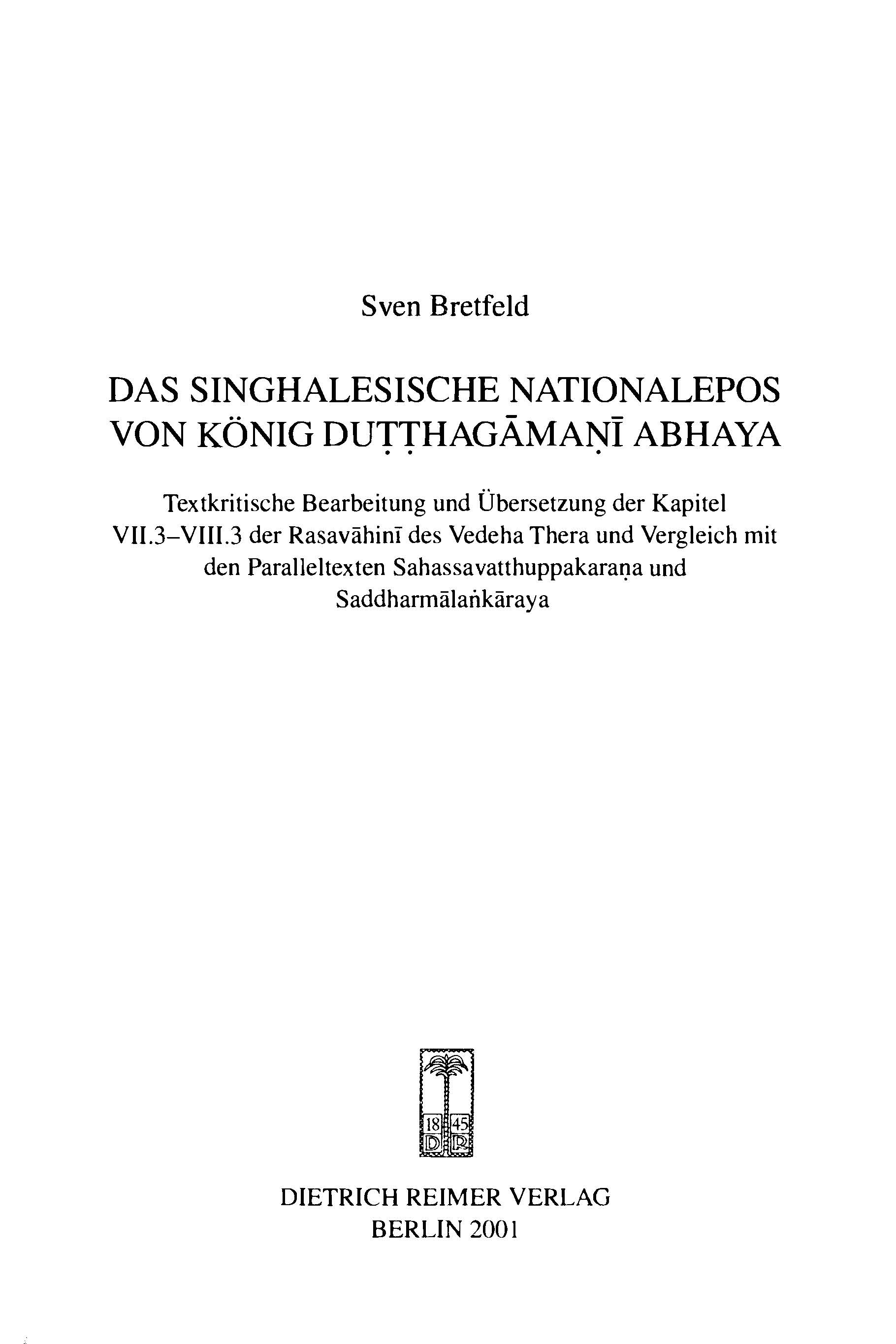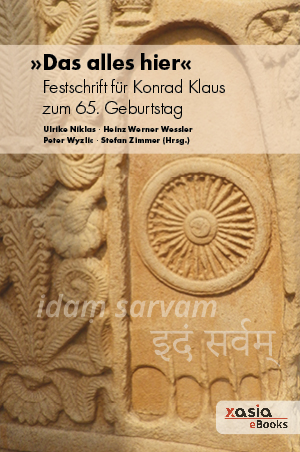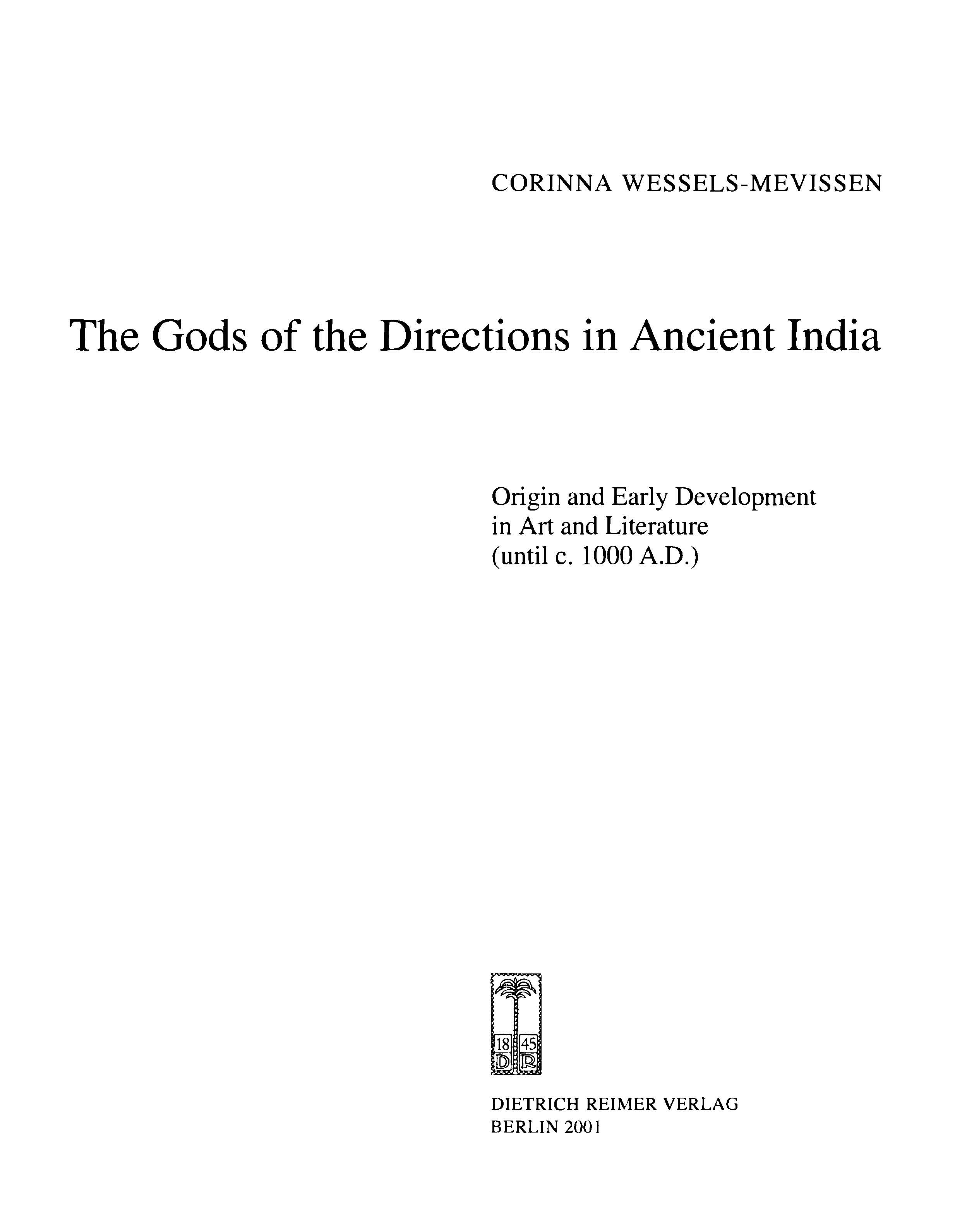##plugins.themes.ubOmpTheme01.catalogue.books##
Suhṛdayasaṃhitā: A Compendium of Studies on South Asian Culture, Philosophy, and Religion. Dedicated to Dominik Wujastyk
The Suhṛdayasaṃhitā is an edited volume dedicated to Dominik Wujastyk that brings together thirteen studies on South Asian intellectual and cultural history from the beginning of the common era to the present day. The multi-disciplinarity and vitality of the academic fields of Indology and South Asian Studies are on full display from chapter to chapter, as leading scholars ask new questions and propose new methods to explore critical topics in their respective fields, including the relationship of the Gāndhāri and Sanskrit languages, bird divination in Indian and cross-cultural contexts, the world view and ethics of early Ayurveda, line drawings in alchemical Sanskrit manuscripts, cannabis in traditional alchemy (Rasaśāstra), deontic logic and terminological problems in Mīmāṃsā and Dharmaśāstra, the identification of an obscure Yoga work referenced in the commentarial literature of the Mahābhārata, psychological transformation and spiritual liberation in Pātañjala Yoga and Buddhism, Sanskrit editorial techniques and the history of printing, the human genome project and the Mahābhārata’s text genealogy, and, finally, the academic pedagogy of contemporary medical anthropology. The time-tested method of analyzing primary sources in Sanskrit and Middle-Indo-Arian languages within their culture-specific historical contexts is fertilized by neuroscience, psychology, evolutionary biology, and anthropology.
In its thematic and methodological diversity, the festschrift, which concludes with a list of Dominik Wujastyk’s works and three indexes, mirrors the broad range of academic interests and expertise of the scholar it is dedicated to.
Getting Married: Hindu and Buddhist Marriage Rituals Among the Newars of Bhaktapur and Patan, Nepal
With contributions by Manik Bajracharya, Christiane Brosius, and Tessa Pariyar
Getting Married is the third and final volume on Hindu and Buddhist life-cycle rituals among the Newars of the ancient city of Bhaktapur in Nepal. It combines extensive fieldwork and the edition and translation of relevant ritual handbooks. While Handling Death, the first volume, focussed on the dynamics of death and ancestor rituals, and Growing Up, the second volume, focussed on the rituals of childhood, adolescence and youth (especially the male and female initiation rituals), the present volume deals with a number of rituals related to marriage.
After an introductory overview of studies on marriage rituals in Nepal the authors give some basic marriage rules of Hindu and Buddhist Newars, the social topography and hierarchy, the families of the marriage partners as well as the problems of endogamy and exogamy in Bhaktapur. They present a detailed description of Hindu and Buddhist marriage rituals among Newars (which are partly documented on the DVD included in this book) and come to relevant conclusions regarding life-cycle rituals in general and the place marriage rituals occupy in Newar society and Hinduism. Furthermore the texts used by Brahmin and Buddhist priests during these rituals are edited and translated and complemented by comprehensive Appendices including a list of elements of Newar rituals and mantras as well as a mantra and general index to all three volumes. The richly illustrated books have been highly appreciated by the scholarly community as a unique attempt to provide a comprehensive ethno-indological study of all major life-cycle rituals of a certain Hindu and Buddhist community.
The film, which was originally published on a DVD accompanying the book, is archived in the heidICON multimedia database and can be viewed via the following link:
Getting Married
Growing Up: Hindu and Buddhist Initiation Rituals among Newar Children in Bhaktapur, Nepal
The authors – an architectural historian (Niels Gutschow) and an indologist (Axel Michaels) – are presenting the second part of a trilogy of studies of life-cycle rituals in Nepal, carried out under the auspices of the Collaborative Research Centre “Dynamics of Ritual”. The initiation of boys and girls of both Hindus and Buddhists of the ethnic community of Newars in the Kathmandu Valley are documented. The first part of the book presents elements of Newar rituals, the spatial background of Bhaktapur and the hierarchy of ritual specialists – illustrated by 21 maps. The second part documents with detailed descriptions the. rst feeding of solid food, birthday rituals, and pre-puberty rituals like the first shaving of the hair, the boy’s initiation with the loincloth (in Buddhist and Hindu contexts), the girl’s marriage with the bel fruit and the girl’s seclusion. One girl’s marriage (Ihi) and three boy’s initiations (Kaytapuja) are documented on a DVD. The third part presents the textual tradition: local handbooks and manuals used by the Brahmin priest to guide the rituals. Two of these texts are edited and translated to demonstrate the function of such texts in a variety of contexts.
The films, which were originally published on a DVD accompanying the book, are archived in the heidICON multimedia database and can be viewed via the following links:
1. Bel fruit and loincloth - initiations of boys and girls in Bhaktapur, Nepal
2. Bel-Frucht und Lendentuch - Initiationen von Mädchen und Jungen in Bhaktapur, Nepal
Jaina Temple Architecture in India: The Development of a Distinct Language in Space and Ritual
Jaina Temple Architecture in India is the first comprehensive study of the development and uniqueness of Jaina sacred structures. The monograph analyses temples in the whole of India and outlines clear continuities by covering the period from the early centuries BCE till the present day. It identifies a distinct Jaina approach to the shaping of ritual space, which involves often complex spatial layouts on various superimposed vertical levels as well as conglomerates of interconnected sanctums and building elements on the horizontal plane. These accommodate a multitude of venerated objects and mirror specific Jaina patterns of worship as well as Jaina mythological and cosmological concepts.
Creating Slogans for Social Change: An Inquiry into Advertising, Gender Imagery, and the Politics of Change in Urban India
What role media content plays in processes of change is an ongoing and multi-layered discussion. Therein, advertising and gender have an extraordinary position. In the context of advertising production in urban India, this book deals with the understanding of social change in the early 2010s. Through an inquiry of the production of advertising created for commercial and/or social purposes, the perceptions of advertising producers are highlighted. The analysis presents the realities of the producers as well as debates surrounding the creation processes. Thereby, the complexities and intertwining of advertising are uncovered, while dynamics of gender, media, and change are discussed.
The Play of the Feminine: Navarātri in Kanchipuram
In Tamil Nadu, the nine-night autumnal Navarātri festival can be viewed as a celebration of feminine powers in association with the goddess. This book explores Navarātri as it is celebrated in the South Indian temple town of Kanchipuram. It investigates the local mythologies of the goddess, two temple celebrations, and the domestic ritual practice known as kolu (doll displays). The author highlights three intersecting themes: namely the play of the goddess in myth and ritual, the religious agency and images of women and the divine feminine, and notions of playfulness in Navarātri rituals; as articulated in creativity, aesthetics, competition, and dramatic expressions.
Sanskrit as an Indo-European Language
Students of Sanskrit can choose among several good textbooks. Whichever they may choose, learning Sanskrit is a daunting task. This book is not an alternative textbook for learning Sanskrit. Instead, it is to accompany these textbooks and written in the hope to make Sanskrit learning easier by explaining words and grammatical forms from an Indo-European point of view. Consider, for example Old Indian ad which means “to eat”, but is also historically related to both English (abbreviated by E) eat and New High German (NHG) essen. There was an Indo-European (IE) root ed that branched out into all these words over some millennia. Even E tooth and NHG Zahn stem from IE ed.
Handling Death: The Dynamics of Death and Ancestor Rituals Among the Newars of Bhaktapur, Nepal
In a rare combination of competence, an architectural historian (Niels Gutschow) and an indologist (Axel Michaels) have documented death rituals of the ethnic community of Newars in the Kathmandu Valley, Nepal. The first part of the book focusses to a specific setting, the ancient city of Bhaktapur and its calendric rituals of death and renewal. An introduction to the urban fabric with its cremation places, routes of death processions, places of spirits and ancestor deities is followed by a presentation of specialists involved in the death and ancestor rituals – illustrated by 28 maps. The second part presents a detailed description of the union of the deceased with his forefathers, a ritual which is also documented on a DVD. In addition, local handbooks and manuals used by the Brahmin priest during this ritual are edited and translated. This ethno-indological method of combination of textual and contextual approaches aims at understanding both the agency in rituals and the function of the text in contexts. Formalized rituals turn out to be by no means strict, stereotypical and unchangeable. The uniqueness of the actors, places and time has prompted the authors to name places and actors and to date time. The study of death rituals represents the first part of a trilogy of studies of life-cycle rituals in Nepal, carried out under the auspices of the Collaborative Research Centre “Dynamics of Ritual” (Sonderforschungsbereich 619: Ritualdynamik).
The ritual was documented by Christian Bau with a video camera and is included as a film on the DVD.
The films, which were originally published on a DVD accompanying the book, are archived in the heidICON multimedia database and can be viewed via the following links:
- Handling death – Latyā – a death ritual of the Newars in Bhaktapur, Nepal
- Den Tod in die Hand nehmen – Latyā - ein Totenritual der Newars in Bhaktapur, Nepal
Exchange, gifting, and sacrificing: Premodern Indian perspectives
In both the Vedic and the classical periods, a special elite class of people existed that were called Brahmins. In a rough manner, one might say that their material wellbeing depended on dakṣiṇā in the Vedic period and on dāna in the classical one.
Broadening the perspective beyond dakṣiṇā and dāna, this book is on all sorts of giving in the context of pre-modern India, using Vedic, Sanskrit, Buddhist and, to a much lesser extent, Roman and Christian sources. The Brahmanical theory of the gift (i.e., the theory of dutiful gifting, dharmadāna) is a major focus of, and has provided a major motivation for, this study.
On the Plastic Surgery of the Ears and Nose: The Nepalese Recension of the Suśrutasaṃhitā
A thousand-year-old Ayurvedic manuscript containing the Compendium of Suśruta was announced to the scholarly world in 2007. The Nepalese manuscript, since adopted by UNESCO as part of the Memory of the World, reveals the state of classical Indian medicine in the ninth century. It enables us to study the changes in this medical classic that have taken place from the ninth to the nineteenth century, when printed texts began to dominate the dissemination of the work. The present monograph describes the research project focussed on this manuscript and offers an edition, study and translation of the historically important chapter about the plastic surgery on the nose and ears.
Mallī-Jñāta: Das achte Kapitel des Nāyādhammakahāo im sechsten Aṅga des Śvetāmbara Jainakanons, herausgegeben, übersetzt und erläutert.
Das achte Kapitel des Nāyādhammakahāo im sechsten Aṅga des Śvetāmbara Jainakanons, herausgegeben, übersetzt und erläutert von Gustav Roth.
Aufbau und Umstrukturierung des Mahāparinirvāṇasūtra: Untersuchungen zum Mahāparinirvāṇa-mahāsūtra unter Berücksichtigung der Sanskrit-Fragmente
Die Geschichte über den Tod des Buddha ist uns in verschiedenen Texten überliefert. Eine Version, das Mahāparinirvāṇa-mahāsūtra, ist einschlägig bekannt als einer der älteren Texte, die die sogenannte “Buddha-Natur-Theorie” vertreten, wonach alle Lebewesen die Natur Buddhas besitzen. Das Sūtra hat über die chinesischen Übersetzungen einen großen Einfluss auf den ostasiatischen Buddhismus ausgeübt. Jedoch ist das Sanskrit-Original nur in Fragmenten überliefert. Die Untersuchungen der Sanskrit-Fragmente beleuchten die Ursprünge dieser Theorie in Indien.
Nachgelassene Schriften: 1. Ein westtocharisches Ordinationsritual, 2. Eine dritte tocharische Sprache: Lolanisch
Der 2017 verstorbene Indogermanist und Tocharologe Klaus T. Schmidt hat zwei Buchmanuskripte hinterlassen: Seine Ausgabe des längsten westtocharischen Textes, eines Ordinationsrituals für buddhistische Mönche, sowie eine unvollendete Arbeit über die seit langem vermutete, aber bisher nicht nachgewiesene dritte tocharische Sprache, von Schmidt "Lolanisch" genannt. Zimmer hat beide Manuskripte vorsichtig redigiert und das zweite mit Abbildungen der von Schmidt bearbeiteten Textfragmente ergänzt. Schmidts Entzifferung des Lolanischen ist ein Meilenstein der Zentralasien-Forschung!
Dhārī Devī, Goddess of the Floods: Development, Disaster and the Transitions of a Place of Worship
The trajectory of the Dhārī Devī Temple epitomises the idea of catastrophes as watersheds. In particular, flood disasters have accompanied transformation processes of the site located on Alaknanda River in the Indian Himalayas. As early as 1894, a flash flood had a significant impact on the site and the identity of the deity. Local flood legends gained new topicality with the planning of a hydroelectric power plant in the vicinity. They became part of debates surrounding the construction scheme that required the relocation of the sacred site. This case study explores flood discourses and illuminates their influence on a development project. It further demonstrates how previous controversies framed the public interpretation of two flood disasters in 2012 and specifically of the "Himalayan Tsunami" in 2013.
God, Jesus and the Ancestors: An Ethnography of the Ancestors’ Rites in the Taiwanese Catholic Church
In this book the author describes the Ancestors Ceremonies as practiced in the Taiwanese Catholic Church. The author’s point is to demonstrate how the Chinese symbolic universe made a deep translation of the "new" symbolic system represented by the Catholic doctrine. At the same time the effort of the Catholic Church in order to adapt the Gospel message to the local situation built up a particular phenomenon that the author defined as cultural dialogue. It is this dialogic relationship the process that the author defines as Culture.
bāteṁ. Hindi-Grammatik kommunikativ 2: Übungen
Der Kopenhagener Hindikurs führt in 46 Lektionen kontextualisiert in die Strukturen des Hindi ein, was einen kommunikativen Grammatikunterricht ermöglicht. Der zweite Teil (L 24-46) gilt dem Verbalsystem in seiner Gesamtheit und der komplexen Syntax – also dem, was im Deutschen die Nebensatzsyntax ausmacht. Die Kontexte entstammen dem Leben der Autoren und ihrer Mitmenschen und laden Lehrer und Lerner dazu ein, sich auf Hindi auszutauschen. Die den Übungen zugrundeliegenden Texte bieten dabei keine abgeschlossene Sicht auf die hindisprachige Welt. Sie leiten vielmehr dazu an, selbst Blickwinkel zu eröffnen und sich dadurch in dialektischer Offenheit das Hindi anzueignen.
Zu jeder grammatischen Struktur gibt es eine Lektion mit einer Auswahl verschiedener Übungsformate, was das Lehrwerk breit einsetzbar macht. Die Lektionen entsprechen etwa den folgenden Stufen des Referenzrahmens des Europarates: L 24-39 = B1.1, L 40-46 = B1.2
bāteṁ. Hindi-Grammatik kommunikativ 1: Übungen
Der Kopenhagener Hindikurs führt in 46 Lektionen kontextualisiert in die Strukturen des Hindi ein, was einen kommunikativen Grammatikunterricht ermöglicht. Im ersten Teil (L 1-23) liegt der Schwerpunkt auf dem Nominalsystem, grundlegenden Verbalkonstruktionen sowie der Syntax des einfachen Satzes. Die Kontexte entstammen dem Leben der Autoren und ihrer Mitmenschen und laden Lehrer und Lerner dazu ein, sich auf Hindi auszutauschen. Die den Übungen zugrundeliegenden Texte bieten dabei keine abgeschlossene Sicht auf die hindisprachige Welt. Sie leiten vielmehr dazu an, selbst Blickwinkel zu eröffnen und sich dadurch in dialektischer Offenheit das Hindi anzueignen.
Zu jeder grammatischen Struktur gibt es eine Lektion mit einer Auswahl verschiedener Übungsformate, was das Lehrwerk breit einsetzbar macht. Die Lektionen entsprechen etwa den folgenden Stufen des Referenzrahmens des Europarates: L 1-12 = A1, L 13-23 = A2
Significant Others, Significant Encounters: Essays on South Asian History and Literature
This volume is dedicated to Maya Burger, professor emerita at the Faculty of Arts, University of Lausanne. It gathers contributions by friends, colleagues, and former students that echo the multiple dimensions of her work. Organised in four parts, Indology, History of Religions, History of Orientalism, and Hindi and Translation, these contributions explore different examples of encounters with “significant others”. Analysing original historical and literary sources and reflecting on the methodological dimensions, the authors offer innovative perspectives on various processes of interaction and exchange between the Indian subcontinent and the wider world and within the subcontinent itself.
Words and Deeds: Hindu and Buddhist Rituals in South Asia
Words and Deeds is a collection of articles on rituals in South Asia with a special focus on their texts and context. The volume presupposes that a comprehensive definition of “ritual” does not exist. Instead, the papers in it avoid essentialist definitions, allowing for a possible polythetic definition of the concept to emerge. Papers in this volume include those on Initiation, Pre-Natal Rites, Religious Processions, Royal Consecration, Rituals which mark the commencement of ritual, Rituals of devotion and Vedic sacrifice as well as contributions which address the broader theoretical issues of engaging in the study of ritual texts and ritual practice, both from the etic and the emic perspective. These studies show that any study of the relationship between the text and the context of rituals must also allow for the possibility that different categories of performers can and do subjectively constitute the relationship between their ritual knowledge and ritual practice, between text and context in differing and nuanced ways.
Computerlinguistische Datierung schriftsprachlicher chinesischer Texte
Die chronologische Einordnung von Texten kann für Authentizitätsforschung und Exegese entscheidend sein. Die Datierung schriftsprachlicher chinesischer Quellen kann u. a. durch Imitation antiker Vorbilder und unklare Urheberschaft erschwert werden. Dieses Buch untersucht erstmals die Entwicklung und Anwendung computergestützter Methoden für die Datierung chinesischsprachiger Quellen. Dabei ermöglicht eine lexembasierte Methode, der stilistischen Rigidität der Schriftsprache zu begegnen und unterstützt damit die philologische Arbeit. Zudem werden der Sprachwandel, die Eignung digitaler Methoden für die Untersuchung Klassischer Texte und das Hanyu da cidian 漢語大詞典 als wichtige Datenquelle für lexikographische Datierung untersucht.
Diese Monografie wurde 2023 mit dem Förderpreis für herausragende Dissertationen des Freundeskreises der Universität Trier ausgezeichnet.
Postnational Perceptions in Contemporary Art Practice
This publication focuses on the works of Chitra Ganesh (b.1974), Tejal Shah (b.1979) and Nikhil Chopra (b.1976) in order to highlight the changing relationship of the gendered body with national identity in contemporary art practice. Ideas of national belonging are challenged precisely through a concerted focus on identities marginalized by the nation. It proposes the ‘postnational’ as an empowering term to mark the shift away from the nation, and, employing a post-structural framework, it argues that the nature of national identity is in itself a construct.
A Flying Dragon: King Taejo, Founder of Korea’s Choson Dynasty
Yi Seong-gye (1335-1408) began life as an obscure warrior of Korea’s borderlands, but rose to overthrow the 500-year Goryeo dynasty and become King Taejo, who founded the 518-year Joseon dynasty, Korea’s final royal lineage and the longest lasting Confucian dynasty in history. King Taejo’s momentous life intersected with watershed East Asian developments: the collapse of the Mongol Empire in Korea, the rise of China’s brilliant Ming dynasty, the pacification of massive Japanese pirating operations, and the rise of Asia’s most thoroughly realized Confucian society in Joseon. This biography tells the tale, ending with the tragic descent of King Taejo‘s own family into fratricide and grief.
Viṣṇu's Children: Prenatal life-cycle rituals in South India
The Vaikhānasas, a group of Brahmanic priests in the Viṣṇu temples of south India, can look back on a long and turbulent history, that is characterized by the effort of claiming their status against rivalling priests. Central to this monograph is a controversy, ongoing for centuries, as to what makes a person eligible to perform the rituals in Viṣṇu temples: does birth or an initiation create the ideal intermediary between the god and humans? Since the 14th century CE the discussions in the relevant Sanskrit texs centre around the question of whether the Vaikhānasas priests must undergo an initiation including a branding on the upper arms, or whether their particular prenatal life-cycle ritual viṣṇubali makes them eligible to perform temple ritual. As hereditary temple priests the Vaikhānasas’ own stance is explicit: they are Viṣṇu’s own children, preordained for temple service already before birth. In addition to the textual perspective, three instances of local conflicts from the 19th/20th centuries about the question of whether the Vaikhānasas require an initiation are analysed in their contexts. Furthermore, three examples of present-day performances of the viṣṇubali ritual are presented and interpreted in the light of the relation between text and performance.
The films, which were originally published on a DVD accompanying the book, are archived in the heidICON multimedia database and can be viewed via the following links:
- Introduction (length 08:10 min)
- Full ritual (length 28:28 min)
- Prepatory rites - Formal declaration (03:51 min)
- Prepatory rites - Vitalisation of the sacrificial fire (06:45)
- Main offerings - Pūjā for Viṣṇu's twelve forms (11:09 min)
- Main offerings - Offering into the fire (09:01 min)
- Main offerings - Viṣṇu marks the unborn child (09:53 min)
- Atonement for ritual flaws (03:46 min)
- Concluding rites (04:43)
- Credits
Of Death and Birth: Icakkiyammaṉ, a Tamil Goddess, in Ritual and Story
Scholars of popular Hindu religion in India have always been fascinated by oral texts and rituals, but surprisingly only few attempts have as yet been made to analyse the relationship between rituals and texts systematically. This book contributes to the filling of this gap. Focusing on the dynamics of a local (non-Brahmanical) ritual, its modular organisation and inner logic, the interaction between narrative text and ritual, and the significance of the local versus translocal nature of the text in the ritual context, the study provides a broad range of issues for comparison. It demonstrates that examining texts in their context helps to understand better the complexity of religious traditions and the way in which ritual and text are programmatically employed. The author offers a vivid description of a hitherto unnoticed ritual system, along with the first translation of a text called the Icakkiyamman-Katai (IK). Composed in the Tamil language, the IK represents a substantially longer and embellished form of a core version which probably goes as far back as the seventh century C.E. Unlike the classical source, this text has been incorporated into a living tradition, and is being constantly refashioned. A range of text versions have been encapsulated in the form of a conspectus, which will shed light on the text’s variability or fixity and will add to our knowledge of bardic creativity.
The films, which were originally published on a DVD accompanying the book, are archived in the heidICON multimedia database and can be viewed via the following links:
Of Death and Birth: A Ritual of the Vēḷāḷas in Paḻavūr, India
- Original recording with voice-over in English.
- Original recording in Tamil without voice-over.
- Stories. The „Stories“ option comprises summaries of both texts sung in the ritual: The translocal story Icakkiyammaṉ Katai and The local Icakki story.
Aktuelle Forschungsbeiträge zu Südasien: 12. Jahrestagung des AK Südasien, 21./22. Januar 2022, Bonn/online
Extendet Abstracts der 12. Jahrestagung des AK Südasien, 21./22. Januar 2022, Bonn/online
In the Shrine of the Heart: Sants of Rajasthan from the Sixteenth and Seventeenth Centuries
In the early modern period, the Sants emerged in North India as devotees of a formless interior god. The volume introduces seven Sant authors living in Rajasthan in the period from the first half of the sixteenth to the eighties of the seventeenth century. It explores their complex cultural background, their literary conventions, and their sectarian network, and presents samples of their poetry in the original Hindi with English translations. By far the most of the compositions in this volume have not been translated before, and of one of these the original text is published also for the first time.
Sant poetry has been transmitted in oral and written form. It owes its continuing vitality largely to congregational and private performance. This fact has been illustrated by a number of audio and video samples.
China, Kropotkin und der Anarchismus: Eine Kulturbewegung im China des frühen 20. Jahrhunderts unter dem Einfluß des Westens und japanischer Vorbilder
Ziel dieses Buches ist es, einen umfassenden Überblick über die Rolle des Anarchismus im China des frühen 20. Jahrhunderts zu geben. Bislang hat sich die Wissenschaft eher auf die politischen Aspekte wie die Rivalität zwischen den Anarchisten und der KPCh konzentriert und den Anarchismus lediglich als Teil der neueren chinesischen Geschichte behandelt. Diese Studie nähert sich dem chinesischen Anarchismus aus der Perspektive einer kulturellen und international eingebundenen Bewegung, was eine breite Diskussion verschiedener Aspekte im Zusammenhang mit der Genese und Entwicklung der chinesischen anarchistischen Bewegung im Rahmen des Weltanarchismus impliziert.
Puṣpikā: Proceedings of the 12th International Indology Graduate Research Symposium (Vienna, 2021)
In the series Puṣpikā – Tracing Ancient India through Texts and Traditions: Contributions to Current Research in Indology, the proceedings of the International Indology Graduate Research Symposium (IIGRS) are published. Puṣpikā is a peer-reviewed series that provides early-career scholars with a platform to share the results of their research on pre-modern South Asian cultures.
This is the 6th volume in the series, containing thirteen articles based on the talks presented at the 12th IIGRS online and in Vienna, Austria on 22–24 July 2021.
Kushan Histories: Literary Sources and Selected Papers from a Symposium at Berlin, December 5 to 7, 2013
Kushan Histories discusses new research concerning the Kushan dynasty and is based on a Symposium held from December 5-7th, 2013 in Berlin.
Rechtskultur und Gerechtigkeitssinn in China
Diskurse über Ordnung und Gesetz innerhalb und zwischen Staaten prägen bereits die frühen überlieferten Schriften aus China. Ob in der philosophischen Debatte zwischen Konfuzianismus und Legismus oder in der Diskussion und Auslegung des Strafrechts durch die höfischen Beamtengelehrten – Rechtsverständnis und Gerechtigkeitsempfinden blieben das chinesische Kaiserreich hindurch von zentraler Bedeutung. Das heutige China sorgt für Kontroversen in Hinblick auf Verbrechen, Strafrecht und Ethik, wobei im In- und Ausland insbesondere chinesische Eigenarten und ausländische Einflussnahmen kritisch diskutiert werden. Im aktuellen Gesellschaftsdiskurs Chinas stehen Fragen nach sozialer Gerechtigkeit und Chancengleichheit im Vordergrund, die auch mit der Legitimität der chinesischen Regierung zusammenhängen. Der hiermit skizzierte Themenkomplex Recht und Gerechtigkeit stand im Mittelpunkt der 25. Jahrestagung der Deutschen Vereinigung für Chinastudien (DVCS), die vom 7. bis 9. November 2014 in Münster stattfand. Der dazugehörige Tagungsband vereint Beiträge von elf Autorinnen und Autoren, die sich Recht und Gerechtigkeit in China aus philologischer, philosophischer, literarischer, historischer, soziologischer, politologischer und nicht zuletzt rechtswissenschaftlicher Sicht nähern. Der Band umfasst sowohl methodisch als auch zeitlich die Bandbreite der Chinawissenschaften, indem relevante Fragestellungen von der West-Zhou-Zeit bis in die jüngste Gegenwart analysiert werden. Das Ergebnis ist ein facettenreicher Zwischenstand, der auch eine fundierte Grundlage für künftige Diskussionen liefert.
Aus technischen Gründen können minimale Unterschiede zwischen dieser digitalen Version und der Druckversion von Harrassowitz bestehen.
Erinnern und Erinnerung, Gedächtnis und Gedenken: Über den Umgang mit Vergangenem in der chinesischen Kultur
Teile der Vergangenheit im kollektiven Bewusstsein zu halten und gezielt zu vergegenwärtigen, prägt unmittelbar auch die subjektive Wahrnehmung des Individuums. Geteilte Erinnerungen sind eine wichtige Grundlage der Identitäts- und Gemeinschaftsbildung. Formen des Reproduzierens und der Reproduzierbarkeit des Erinnerns, die das Festhalten von Vergangenem wie das Bewahren gegenwärtiger Erkenntnisse einschließen, sind kulturell und historisch bedingt. So gehören zu jeder Kultur des Erinnerns und Gedenkens – oder auch des Vergessens – gesellschaftliche Auseinandersetzungen, Verkettungen, Krisen und Schicksalsschläge ebenso wie positiv besetzte Momente und glückliche Begebenheiten.
Um die Bedeutung der Erinnerungskultur für die vergangene und gegenwärtige Entwicklung Chinas aufzuzeigen, betrachtet der von Maria Khayutina und Sebastian Eicher herausgegebene Band die chinesische Erinnerungskultur aus historischer, philologischer, literaturwissenschaftlicher und kulturwissenschaftlicher Perspektive und das über einen langen Zeitraum vom frühen Mittelalter bis in die Gegenwart. Die Fallstudien der neun Autorinnen und Autoren widmen sich so unterschiedlichen Quellen wie frühmittelalterlichen geographischen Werken, Dynastiegeschichten, Song-zeitlichen Gedichten, Ming-Romanen sowie Wörterbüchern, immateriellem Kulturerbe auf der UNESCO-Liste und zeitgenössischen Filmen bis hin zu aktuellen Entwicklungen auf dem Feld der künstlichen Intelligenz.
Aus technischen Gründen können minimale Unterschiede zwischen dieser digitalen Version und der Druckversion von Harrassowitz bestehen.
Temples, Texts, and Networks: South Indian Perspectives
For many centuries, Hindu temples and shrines have been of great importance to South Indian religious, social and political life. Aside from being places of worship, they are also pilgrimage destinations, centres of learning, political hotspots, and foci of economic activities. In these temples, not only the human and the divine interact, but they are also meeting places of different members of the communities, be they local or coming from afar. Hindu temples do not exist in isolation, but stand in multiple relationships to other temples and sacred sites. They relate to each other in terms of architecture, ritual, or mythology, or on a conceptual level when particular sites are grouped together. Especially in urban centres, multiple temples representing different religious traditions may coexist within a shared sacred space. The current volume pays close attention to the connections between individual Hindu temples and the affiliated communities, be it within a particular place or on a trans-local level. These connections are described as “temple networks,” a concept which instead of stable hierarchies and structures looks at nodal, multi-centred, and fluid systems, in which the connections in numerous fields of interaction are understood as dynamic processes.
Reviews
Amol Saghar in: IIAS Reviews (2023)
Das Kapīśāvadāna und seine Parallelversion im Piṇḍapātrāvadāna
Die vorliegende Arbeit ist eine überarbeitete Fassung der 1992 von der Philosophischen Fakultät der Rheinischen Friedrich-Wilhelms-Universität Bonn angenommenen Dissertation. Sie beinhaltet die Edition und Übersetzung des Kapīśāvadāna und dessen Parallelversion im Piṇḍapātrāvadāna sowie eine Einleitung mit drei Schwerpunkten:
1. die Zuordnung der verschiedenen Hss der beiden Avadānas zu den entsprechenden Fassungen und, soweit möglich, die Darstellung des Verhältnisses der verschiedenen Fassungen zueinander,
2. die vom Autor benutzten buddhistischen Erzählmotive und
3. die hybriden Sanskrit-Formen.
The Heart of Change - Issues on Variation in Hindi
The present volume, which comprises seven English contributions and four in Hindi, addresses issues of linguistic variation – a phenomenon central to the study of language use – in regard to the major official language of India. It combines multiple theoretical and pragmatic approaches to a variety of linguistic phenomena conceptualised under the designation 'Hindi’ and attempts to obtain a more accurate portrayal of the changing reality behind this versatile taxonomic term. In doing so, this volume provides insight into how the forms and functions of Hindi are changing across borders within and outside of India; the concept of language contact is thus present in several of the studies. The analyses are based upon data observed in written texts, including manuscripts, and elicited from instances of oral speech.
The contributions, prepared by established and emerging scholars from several Asian and European countries, investigate functional aspects of the regional, social, and cultural forms of Hindi and how they interact in differing contexts, time periods, and types of communication. A similar vantage point is being adopted in the investigation of possibilities and constraints of formal variation in the grammatical structures of Standard Hindi. In addition to providing analyses from the perspectives of both general linguistics and sociolinguistics, the book discusses issues associated with teaching Hindi from the perspective of language variation.
The volume is distinguished by its innovative character in terms of both the data utilized in it and the width of its scope, and aims to contribute to a better understanding of ‘Hindi’ as a concept as well as of the general principles of linguistic variation.
Die Lekhapaddhati-Lekhapañcāśikā: Briefe und Urkunden im mittelalterlichen Gujarat
Text, Übersetzung und Kommentar der Lekhapaddhati-Lekhapañcāśikā, ein anonymer, in Jaina- bzw. Gujarātī-Sanskrit verfasster Text aus dem mittelalterlichen Gujarat, der Muster von Urkunden und Briefen enthält.
Sound, Meaning, Shape: The Phonologist Wei Jiangong (1901-1980) between Language Study and Language Planning
One of the leading proponents of the radical linguistic reforms in 20th century China, Wei Jiangong remains hardly known in the West. This book describes how Wei, who was rooted in traditional philology and conceptualizing language as a tool, helped to promulgate a standard language, led the compilation of the world’s most popular dictionary, and helped to drive script reform. While these measures were characterized as violent intervention in the Chinese language sphere, Wei’s careful negotiating of linguistic description and political prescription illustrates how they also may have been steps that helped to achieve linguistic self-determination.
Reviews
Yurou Zhong, in: China Quarterly (2023), 1-2
Aktuelle Forschungsbeiträge zu Südasien: 11. Jahrestagung des AK Südasien, 07./08. Mai 2021, Göttingen/Online
Extended Abstracts der 11. Jahrestagung des AK Südasien, 07./08. Mai 2021 in Göttingen (Online).
Theorising Emotions: An Enquiry into the Emotion Knowledge of Premodern Tamil Treatises
It is impossible to imagine human history without emotions. But what is known about theoretical emotion knowledge in premodern South India? This volume offers a first systematic examination of emotion knowledge as found in Tamil treatises and commentaries written from the 11th to 17th century. By following different theoretical strands, it sheds light on the questions that were raised by various emotion theorists, as well as their agenda and theorising practices. It points out changes, linearity, and disruptions in their ideas, as well as historically marginal knowledge. Perhaps surprisingly, the only systematic works on emotion produced by medieval and early modern Tamil thinkers were on emotion in poetics.
Bruchstücke des Bhikṣuṇī-Prātimokṣa der Sarvastivādins; Bruchstücke buddhistischer Sūtras aus dem zentralasiatischen Sanskritkanon
Faksimile-Reproduktion der ursprünglich 1926 und 1932 bei der Deutsche Morgenländische Gesellschaft in Kommission bei F. A. Brockhaus erschienenen Werke "Bruchstücke des Bhikṣuṇī-Prātimokṣa der Sarvastivādins" und "Bruchstücke buddhistischer Sūtras aus dem zentralasiatischen Sanskritkanon", zusammengefasst in einem Band.
Die Sīmā: Vorschriften zur Regelung der buddhistischen Gemeindegrenze in älteren buddhistischen Texten
Die vorliegende Untersuchung ist die erweiterte Fassung meiner 1989 vom Fachbereich Historisch-Philologische Wissenschaften in Göttingen angenommenen Dissertation. Sie setzt sich aus drei Teilen zusammen, die jeweils in sich abgeschlossen und mit einer separaten Einleitung versehen sind. Der erste Teil dieser Arbeit (A) ist dem Terminus sīmā im Vinaya der Theravādin gewidmet. Dabei werden in einem ersten Abschnitt (I) die im zweiten Kapitel des Mahāvagga überlieferten Vorschriften zur Regelung der Sīmā untersucht, während in einem zweiten Abschnitt (II) die Anwendung des Terminus sīmā in alien übrigen Teilen des Vinaya behandelt wird. Teil A soll somit einen Überblick darüber vermitteln, welche Sīmā-Regelungen in dieser frühen Periode bereits in Kraft waren und wie sie angewendet wurden. Im zweiten Teil (B) wird sodann der Kommentar zu den Sīmā-Regeln im Vinaya, d. h. zu dem in A I behandelten Text, aus Buddhaghosas Samantapāsādikā bearbeitet. Hierbei werden zu einer Reihe von Textstellen auch die drei großen Vinayaṭīkās - Vajirabuddhiṭīkā, Sāratthadīpānī und Vimativinodanīṭīkā - herangezogen. In Teil C werden anhand der aus Gilgit stammenden Sanskrit-Handschrift des Vinayavastvāgama und der im Kanjur überlieferten tibetischen Ubersetzung die im Kapitel uber die buddhistische Beichtfeier iiberlieferten Sīmā-Regeln der Mūlasarvāstivādin untersucht und mit den Regelungen der Theravādin verglichen.
Drei "Bundi"-Rāgamālās: Ein Beitrag zur Geschichte der rajputischen Wandmalerei
Mit dem vorliegenden Band wird ein Beitrag zur Geschichte der rajputischen Wandmalerei geleisten, indem drei Sequenzen von je 36 bisher unveröffentlichten Wandmalereien vorgestellt, ikonographisch bestimmt und datiert werden. Zwei der Sequenzen befinden sich in einem der Öffentlichkeit in der Regel unzugänglichen Teil des Palastes von Bundi, der Hauptstadt des gleichnamigen ehemaligen Fürstenstaates und heutigen Distriktes im Bundesstaat Rajasthan, die eine Malschule hervorgebracht hat, welche Seite an Seite mit der berühmten Malschule von Kangra im Pahari-Gebiet genannt wird. Mitunter wird dieser Malstil sogar zu den schönsten Malstilen der indischen Miniaturmalerei gerechnet.
Japan's Contemporary Media Culture between Local and Global: Content, Practice and Theory
This collection features a wide range of inquiries into Japan’s contemporary media culture, situating popular media content and its related practices and theories in the complex interplay between local and global. The chapters draws attention to several prominent phenomena, suggest new approaches to media culture, and highlight the importance of positionality with regard to research on media culture. The volume documents the results of a series of PhD student workshops held in Kyoto and Leipzig between 2017 and 2019, and continues the discussions started there.
A list of Errata has been added on 14th February 2022.
The Imperial Library of the Northern Song: A Complete Translation of the Lintai gushi (canben) 麟台故事 (殘本) by Cheng Ju 程俱 (1078-1144)
The present text is a translation of the Lintai gushi by Cheng Ju, a book that deals with the imperial book collections under the Northern Song. The library collections of the early Northern Song were created from scratch, only to be partially destroyed again in the disastrous fire of 1015 and during the shift of the capital from Kaifeng to Hangzhou. Cheng Ju’s Lintai gushi is the oldest surviving source of information on the Northern Song (960‒1126) imperial libraries. The Lintai gushi bears witness to the various activities undertaken to rebuild comprehensive book collections and thus to fill the gap in the history of imperial Song libraries.
Excavations at Sonkh: 2500 years of a town in Mathura district
The present report on the excavations at the mound of Sonkh, District Mathura, incorporates a detailed account of the material remains unearthed in eight seasons (1966-74) by a team of German archaeologists sent out by the Museum of Indian Art, Berlin, under the direction of the author. It replaces the more than 20 campaign and preliminary articles in journals published through the years.
The Art of Eastern India in the Collection of the Museum für indische Kunst, Berlin: Stone & Terracotta Sculptures
The catalogue presents the stone sculptures and the terracottas from Eastern India which are in the possession of the Museum für Indische Kunst, Berlin. The collection is old and was assembled at a time, in the 19th and early 20th c., when the only other large Western institutions to collect art from Eastern India were the British Museum and the Victoria & Albert Museum, and in importance, it is to be placed next to the collection of the British Museum. It illustrates specific aspects of the art of eastern India, which are not so commonly collected like votive caitya.s or votive slabs, which were found at Bodh Gayā and are usually disregarded.
Kunst, Markt, Kommunikation: Die zeitgenössische Kunstwelt in Indien im Wandel (2000-2018)
Zeitgenössische bildende Kunst findet längst nicht mehr nur in westlichen Kunstzentren statt. Insbesondere „emerging art markets“ wie Indien oder China mit aufstrebenden Mittel- und Oberschichten ziehen seit Beginn der 2000er Jahre verstärkt die Aufmerksamkeit des globalen Kunstfelds auf sich. Diese Kunstmärkte fügen sich jedoch nicht einfach in den westlichen Kunstbetrieb ein, sondern differenzieren sich zu (trans)lokalen Kunstfeldern aus. Das Buch zeichnet nach, wie sich (trans)lokale Kunstinstitutionen, Wissensräume und Ressourcen in Indien zwischen 2000 und 2018 entwickelt haben und legt nahe, den Wandel der zeitgenössischen Kunstwelt in Indien als dezidierten Lokalisierungsprozess zu verstehen. Anhand der India Art Fair, der Kochi-Muziris-Biennale und den Positionierungen und Praktiken lokaler Kunstakteur*innen in Mumbai, Delhi und Kochi wird ein neues Selbstverständnis der kunstinteressierten indischen Gesellschaft sichtbar, das zunehmend zur Emanzipation von westlichen Kunstzentren führt.
Die Vorschriften für die buddhistische Nonnengemeinde im Vinaya-Piṭaka der Theravādin
Wohl gegen Ende des ersten nachchristlichen Jahrtausends endete die Ordinationstradition der Nonnen der buddhistischen Theravāda-Schule. Dennoch werden auch die Verhaltensvorschriften der Nonnen, die ebenso wie die der Mönche als Buddhawort gelten, in der Sammlung der kanonischen Texte weiterhin überliefert. In der vorliegenden Untersuchung wird das Regelkonvolut für Nonnen der Theravāda-Tradition ausgehend von den besonderen Nonnenregeln im Buch der Ordensdisziplin (Vinaya-Piṭaka) und den relevanten Kommentarstellen in der Samantapāsādikā dargestellt und mit den Verhaltensvorschriften für die Mönche derselben Überlieferung verglichen. Die Arbeit ist eine überarbeitete Fassung der 1995 vom Fachbereich Historisch-Philologische Wissenschaften der Georg-August-Universität in Göttingen angenommenen Dissertation.
Das singhalesische Nationalepos von König Duṭṭhagāmaṇī Abhaya: Textkritische Bearbeitung und Übersetzung der Kapitel VII.3-VIII.3 der Rasavāhinī des Vedeha Thera und Vergleich mit den Paralleltexten Sahassavatthuppakaraṇa und Saddharmālaṅkāraya
Eine eingehende Erforschung der maßgeblichen „mittelalterlichen" Bearbeitung des Stoffes des singhalesischen Nationalepos - in Pāli als größte zusammenhängende Sammlung von Erzählungen in der Rasavähinī von Vedeha und in singhalesischer Sprache in der erweiterten Bearbeitung von Dharmakīrti - wird nun erstmals in der vorliegenden Arbeit von Sven Bretfeld vorgelegt. Die Bedeutung dieses Stoffes für die Südasienforschung geht weit über den Bereich der reinen Texterschließung hinaus: Im Mittelpunkt dieses Textes steht der seit mehr als zwei Jahrtausenden bestehende Konflikt zwischen Singhalesen und den aus Südindien zugewanderten Tamilen. Es ist eben dieser Konflikt, der im positiven Sinne zum Ursprung der Geschichtsschreibung im indischen Kulturbereich, im negativen Sinn aber zum heutigen Bürgerkrieg in Sri Lanka geführt hat. So hat Sven Bretfeld mit diesem hier zum ersten Mal in einer wissenschaftlichen Ausgabe zugänglich gemachten und erstmalig übersetzten Text einen grundlegenden Beitrag sowohl für die traditionelle Indologie und Buddhismusforschung als auch für ein tieferes Verständnis der heutigen Situation in Sri Lanka geleistet.
»Das alles hier«: Festschrift für Konrad Klaus zum 65. Geburtstag
»Das Weltall, die Gesamtheit des in der Welt Vorhandenen, wird in den Brāhmaṇas gewöhnlich mit dem Ausdruck idaṃ sarvam ›das alles hier‹ bezeichnet…«, reads Konrad Klaus' doctoral thesis Die altindische Kosmologie (1986). The completion of his 65th year – at the same time the completion of two decades as a university professor in Bonn – is a welcome occasion for us to honour Konrad Klaus with this Festschrift. »Das alles hier« may gladly also be interpreted in terms of the honoree's life's work to date: A rich academic work with multiple activities in teaching, research and science management with a large number of brilliant publications on philological and cultural-historical issues as visible signs. Konrad Klaus has a worthy place in the scholarly tradition of Indology, which began in Germany with the establishment of the first chair dedicated to Indian philology at the newly founded University of Bonn in 1818. It would be mistaken to think that the 200th anniversary in 2018 was a kind of early funeral. The transition to South Asian Studies with a renewed profile is part of the life's work of Konrad Klaus, who, although himself a classical Indologist, fully supported and benevolently accompanied this reorientation.
The Gods of the Directions in Ancient India: Origin and Early Development in Art and Literature (until c. 1000 A.D.)
This comprehensive study presents the origins and diverse trajectories of development of the concept of the - mostly eight - directional deities (dikpalas) in the literature and especially in the art of India in a describing and analyzing approach, with the help of an extensive illustration section. Such treatment of the material yields new insights in iconographic research on the figure art of India.



